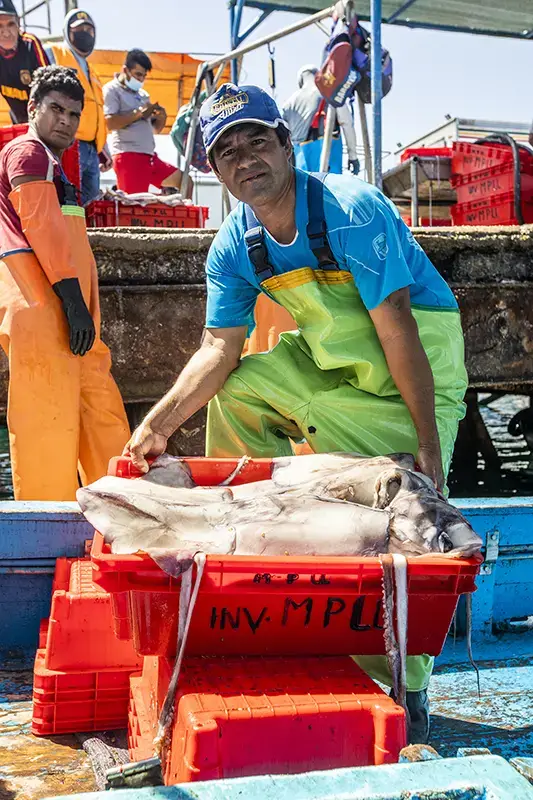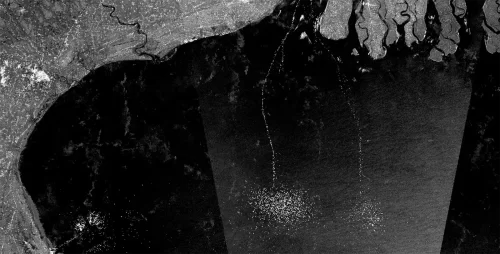
© DVIDS
The Issue
The flying jumbo squid, or Humboldt squid, can grow up to three meters long and weigh up to 50 kilograms. The most common marine invertebrate in the Southeast Pacific, these voracious predators migrate along the coast of Latin America, from Mexico to Chile.
Demand for jumbo squid has been on the rise, and catches have grown dramatically over the last two decades. Essential to fishing communities and local economies, jumbo squid is targeted by more than 4,000 coastal fishing vessels from Peru and Chile. But it also attracts hundreds of industrial-scale vessels from the other side of the Pacific, mainly China.
Squid fishing needs to be carefully managed to ensure it remains sustainable. But until recently, there has been little monitoring of these elusive creatures or the fleets that target them.

Our Work
In 2020, as interest and vessel activity grew in the Southeast Pacific Ocean, we used satellite radar and optical data to track the movements and behavior of the distant water squid fishing fleet. We also cross-referenced this data against information recorded by the South Pacific Regional Fisheries Management Organization (SPRFMO)—the management body responsible for overseeing this area of the ocean.
Through our data and analysis, 615 industrial-scale vessels were found to be fishing on the high seas to the west of South America, spending a total of 876,366 hours fishing—that’s equivalent to 94,559 days. Of these vessels, 95 percent came from China, with the rest flying the flags of Chinese Taipei or the Republic of Korea. Tracking data showed hundreds of these Chinese vessels fishing right up to the edge of the Galapagos Marine Reserve, a critical region for fish stocks and biodiversity.
While our analysis brought several issues to light—like the masking of vessels through the sharing of maritime mobile service numbers or the use of multiple ones—it also revealed that 16 vessels were broadcasting false positions, a practice known as “spoofing,” and just over 80 vessels were identified using vessel tracking data that were not listed on SPRFMO’s list of active vessels.
Things also failed to add up when it came to transshipment—a practice where fishing vessels transfer their catch to refrigerated cargo vessels, or carriers, at sea. Our data identified 41 active carrier vessels in 2020, when SPRFMO had only 12 on its list. This represented a major discrepancy between reported transshipments and what we observed.
In the months to follow, we provided detailed reports to the governments of Ecuador, Chile and Peru, and our findings received widespread coverage. In 2021, we saw the Chinese fleet keep its distance from the Galapagos for the first time in five years—also staying away from Peruvian waters. This was complemented by fewer vessels operating in the area as well as a smaller number of overall irregularities when it came to vessels broadcasting their positions.
We continue to monitor the scale of squid fishing throughout the world as we push for greater transparency to ensure it is legal, verifiable and sustainable.

